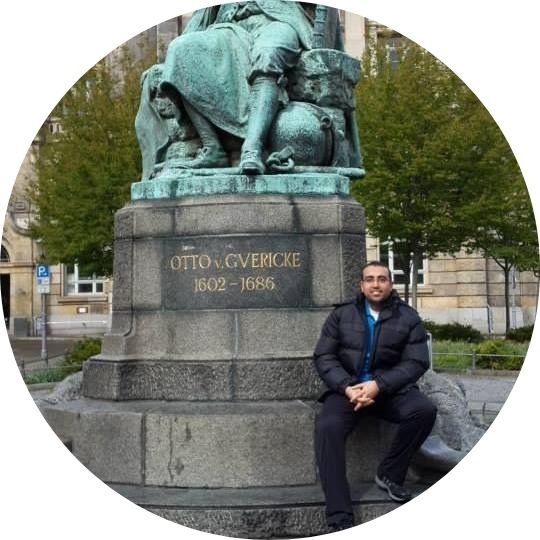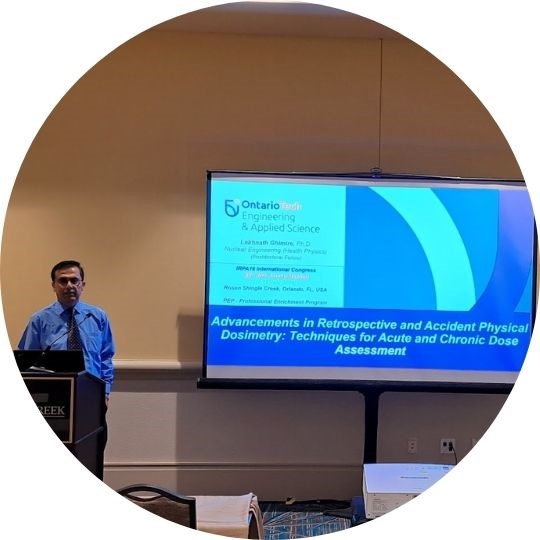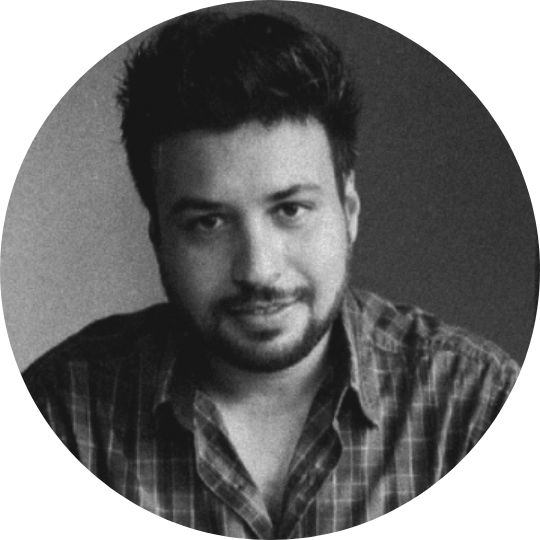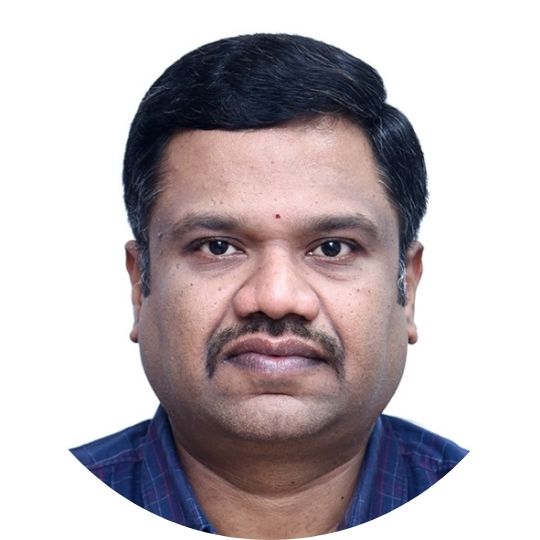Postdoc Profiles
2025 - 2026
The School of Graduate and Postdoctoral Studies (SGPS) is proud of the accomplishments of our postdoctoral fellows and excited to showcase the diverse and impactful research they have undertaken and acknowledge their contributions to Ontario Tech's rich culture of innovation and excellence.
-
Ahmed Mohamed, PhD
 Ahmed Mohamed, PhD
Ahmed Mohamed, PhD
Faculty: Engineering and Applied Science
Field of Research: Renewable EnergyA mechanical engineer with a Doctor of Philosophy of Applied Science (PhD), specializing in Renewable Energy systems, Sea Wave Energy Conversion System, Wind Energy, Hydrokinetic Energy, Power Generation, Thermofluid and Turbomachinery.
Research and professional highlights
- Accumulated over 10 years of expertise in Computational Fluid Dynamics (CFD) utilizing the ANSYS Fluent- ANSYS AQWA software suite, in addition to four years of experience in TRNSYS simulation tools.
- Developed a novel technology and filed a patent for a hydrokinetic turbine designed to harness mechanical energy from river currents under the title of SSWT, which also serves a dual function as a wind turbine.
- Demonstration of Smart Water Systems for Sustainable Cities: modeling and calculating water consumption and wastewater usage, integrating the capability to recycle wastewater within buildings, and developing various scenarios for water recycling within buildings to reduce water consumption and optimize costs. Utilized Multiphysics modeling and ANSYS-Fluent simulations to calculate water flow rates, network pressure and water velocity in the pipe.
- Designed and built an innovative hydrogen generation system with an efficiency exceeding 94 per cent.
- Developed a sea wave energy conversion system called Wave Hunter to convert the sea wave into mechanical energy.
- Skilled in visualizing and post-processing numerical and experimental data from various engineering fields.
-
Alejandro Buitrago Bernal, PhD
 Alejandro Buitrago Bernal, PhD
Alejandro Buitrago Bernal, PhD
Faculty: Engineering and Applied Science
Field of Research: ElectronicsDr. Bernal is working on the design and integration of reconfigurable RF components for future communication and sensing systems.
Research applications
- Satellite communications
- 5G/6G and smart cities
- Connected/autonomous vehicles
- Biomedical/structural monitoring
-
Lekhnath Ghimire, PhD
 Lekhnath Ghimire, PhD
Lekhnath Ghimire, PhD
Faculty: Engineering and Applied Science
Field of Research: Nuclear Engineering and Radiation ScienceDr. Ghimire earned his PhD in Nuclear Engineering (Health Physics and Radiation Science) from Ontario Tech University. He is currently a Postdoctoral Fellow in the Radiation Research Group under the supervision of Dr. Edward Waller. Dr. Ghimire has extensive research experience in nuclear engineering and radiation science. His primary research interests include low-dose radiation measurement and instrumentation, nuclear forensics, small modular reactors (SMRs) and accident/retrospective dosimetry.
Several of his studies have been featured in university research news. Most recently, his comprehensive paper entitled “The Future of Health Physics: Trends, Challenges, and Innovation” was highlighted in Nuclear Newswire, the magazine of the American Nuclear Society. He also led the first survey of its kind in Canada, assessing public nuclear literacy and perceptions of low-dose radiation and small modular reactors, with results to be published online soon.
Research and publication highlights
- Published 14 peer-reviewed papers in international journals.
- Expertise in:
- Small modular reactors (SMRs) and low-dose risk communication, radiation physics and state-of-the-art plastic Scintillation detector technology.
- Nuclear forensics and non-proliferation and safeguards.
- Low-dose research, electron paramagnetic resonance (EPR) applications and instrumentation.
- Nuclear refurbishment and decommissioning.
- Working as a reviewer in Radiation Physics and Chemistry, Health Physics Journal, Physics in Medicine and Biology and Journal of Environmental Management.
-
Roham Lavimi, PhD
 Roham Lavimi, PhD
Roham Lavimi, PhD
Faculty: Engineering and Applied Science
Field of Research: Computational AeroelasticityDr. Roham Lavimi earned his Ph.D. in Mechanical Engineering from the Université de Sherbrooke, Canada, in 2025. His doctoral research focused on developing an automated optimization framework for turbomachinery based on the adjoint method, resulting in efficiency improvements and reduced design time. He brings over nine years of experience in Computational Fluid Dynamics (CFD), with expertise in turbomachinery design/optimization, aerodynamics, hydrodynamics and aeroacoustics.
Currently, Dr. Lavimi is a Postdoctoral Fellow in the field of computational aeroelasticity. His research focuses on the aeroelastic behavior of flexible membranes as passive flow-control devices in bluff-body flows, with applications in air taxis and urban air mobility concepts. In these systems, membranes undergo large deformations when interacting with gusts and unsteady flow conditions. His work aims to optimize aeroelastic parameters to achieve the highest possible aerodynamic performance, contributing to the design of adaptive and energy-efficient transportation technologies.Research and publication highlights
- Turbomachinery Optimization (2021–2025):
- Gradient-free CFD optimization of a centrifugal blower impeller and volute, achieving a 15 per cent efficiency gain by integrating open-source tools (Salome, OpenFOAM, DAKOTA) through customized Python scripts.
- Adjoint-based optimization of the same blower, achieving an additional 1.5 per cent efficiency improvement by integrating open-source tools (Salome, OpenFOAM) with Python-based automation.
- Aeroacoustics (2020): Investigated noise radiation of single- and dual-diaphragm systems using direct numerical simulations (DNS) in PowerFLOW.
- Hydrodynamics (2019): Optimized nose and tail of an autonomous underwater vehicle, reducing drag by 26 per cent using ANSYS Fluent.
- Unsteady Aerodynamics (2016): Simulated bio-inspired dragonfly airfoils under pitching and flapping motion using ANSYS Fluent.
- Turbomachinery Optimization (2021–2025):
-
Venkata Subrahmanya Ragahvendra Varaprasad Oruganti, PhD
 Venkata Subrahmanya Ragahvendra Varaprasad Oruganti, PhD
Venkata Subrahmanya Ragahvendra Varaprasad Oruganti, PhD
Faculty: Engineering and Applied Science
Field of Research: Electronic Vehicles Charging Infrastructure Development, Power ElectronicsDr. Venkata Subramanya Raghavendra Varaprasad Oruganti (Member, IEEE) earned his Ph.D. in Electrical Engineering from the National Institute of Technology Warangal, India in 2019. He currently serves as a Postdoctoral Fellow at the Smart Transportation Electrification and Energy Research (STEER) Group within the Department of Electrical, Computer, and Software Engineering, Faculty of Engineering and Applied Science, Ontario Tech University.
His current research interests focus on Advanced Power Electronic Converters for Electric Vehicle Charging Applications, Multifunctional inverters, Wireless Power Transfer, Cyber security, AI application in Power Electronic Converter Control. Dr. Oruganti is also a Life Member of the Indian Society for Technical Education and Member of IEEE Power Electronics Society, IEEE Power & Energy Society, IEEE Industrial Applications Society and IEEE Industrial Electronics Society.
Awards and Scholarships
- Best Post-Doctoral Fellow Award - 2025
- Power System Operation Corporation Limited (POSOCO) Power System Award - 2017
- Bhaskara Advanced Solar Energy Fellowship from the Government of India - 2015